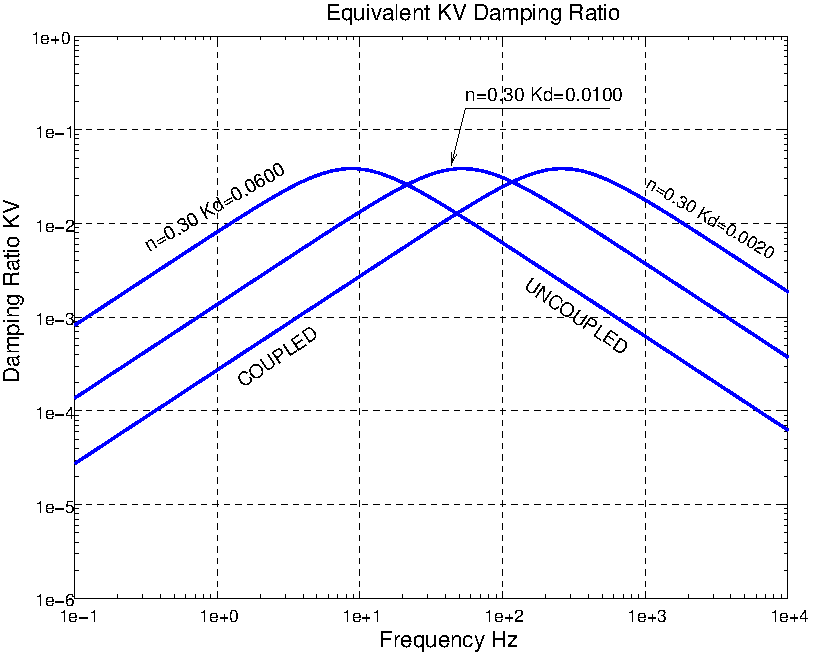Next: Inverting Stiffness and Damping Up: Hydraulic Conductivity from Seismic Previous: KV Damping Ratio vs Contents Index
The Octave program fqKVMBscan.m presents the model's representation of a soil's dynamic behavior under different shaking frequencies. For the case of 30% porosity, Figure 68 shows that increasing hydraulic conductivity (Kd) should produce more friction as represented in the KV damping ratio when the pore fluids are coupled to the frame.
 |
Interestingly, when one looks at uncoupled behavior, the reverse is true. Increasing permeability decreases the KV damping ratio, and there is less friction at those high frequencies.
pm 2018-04-08